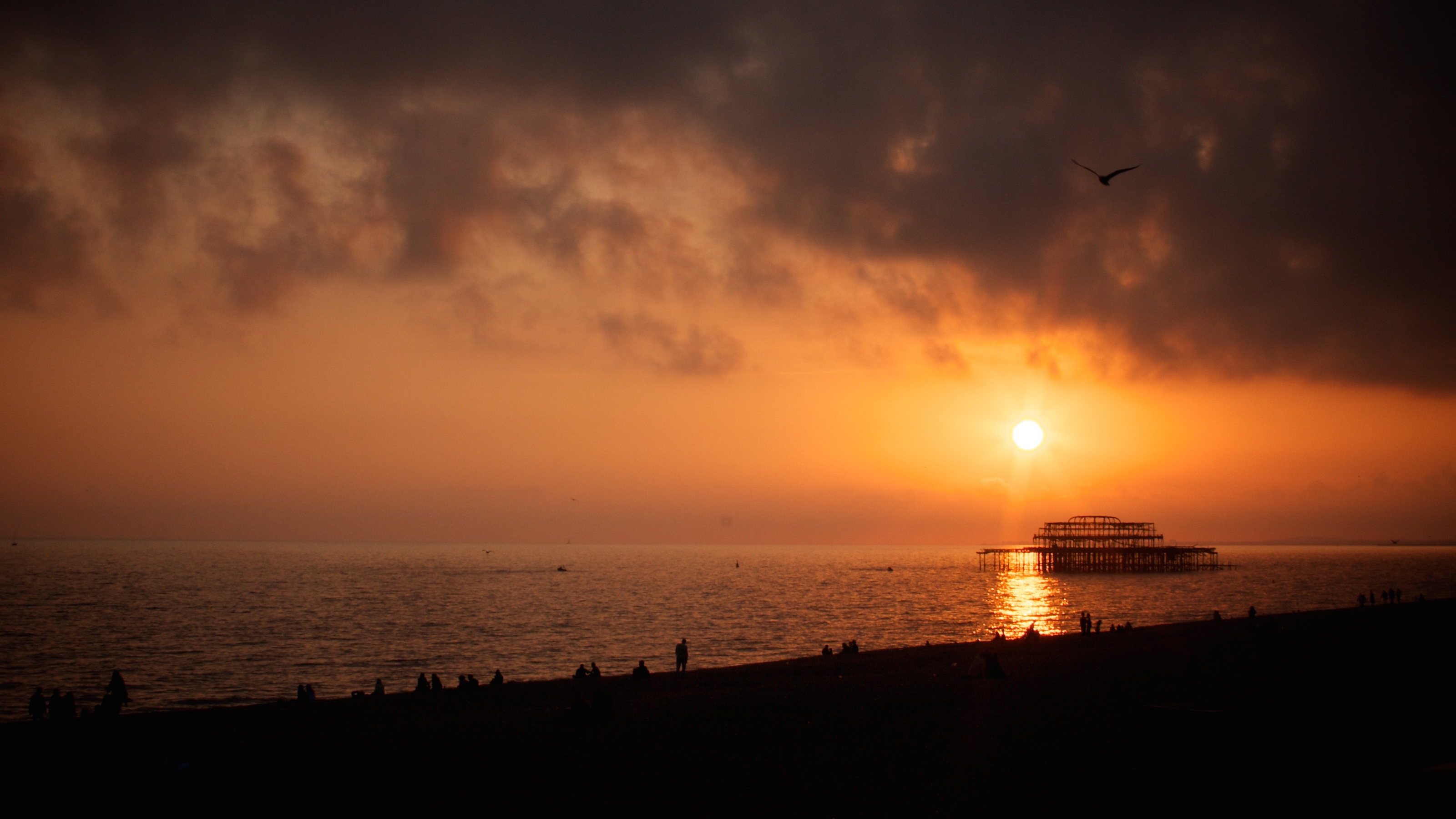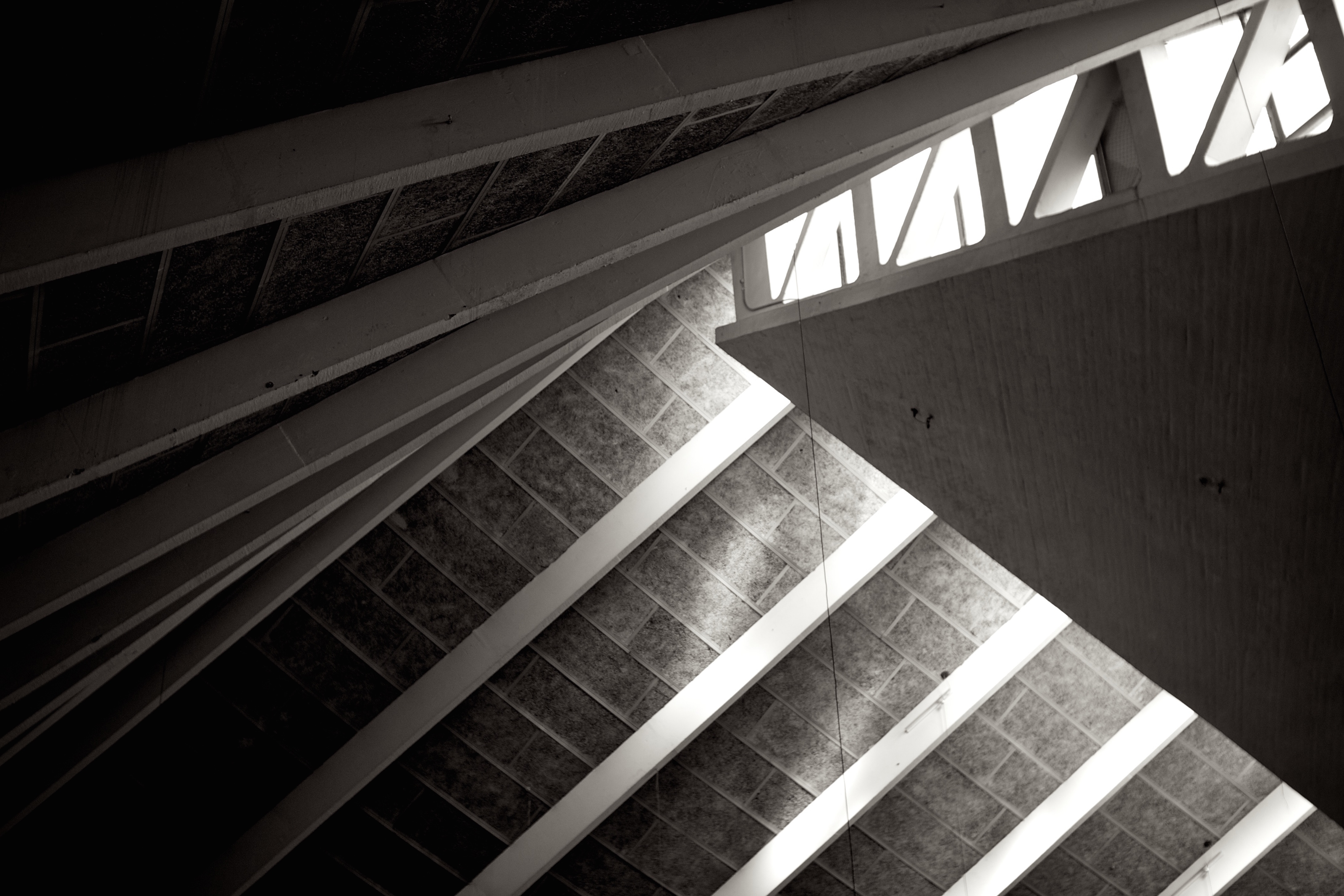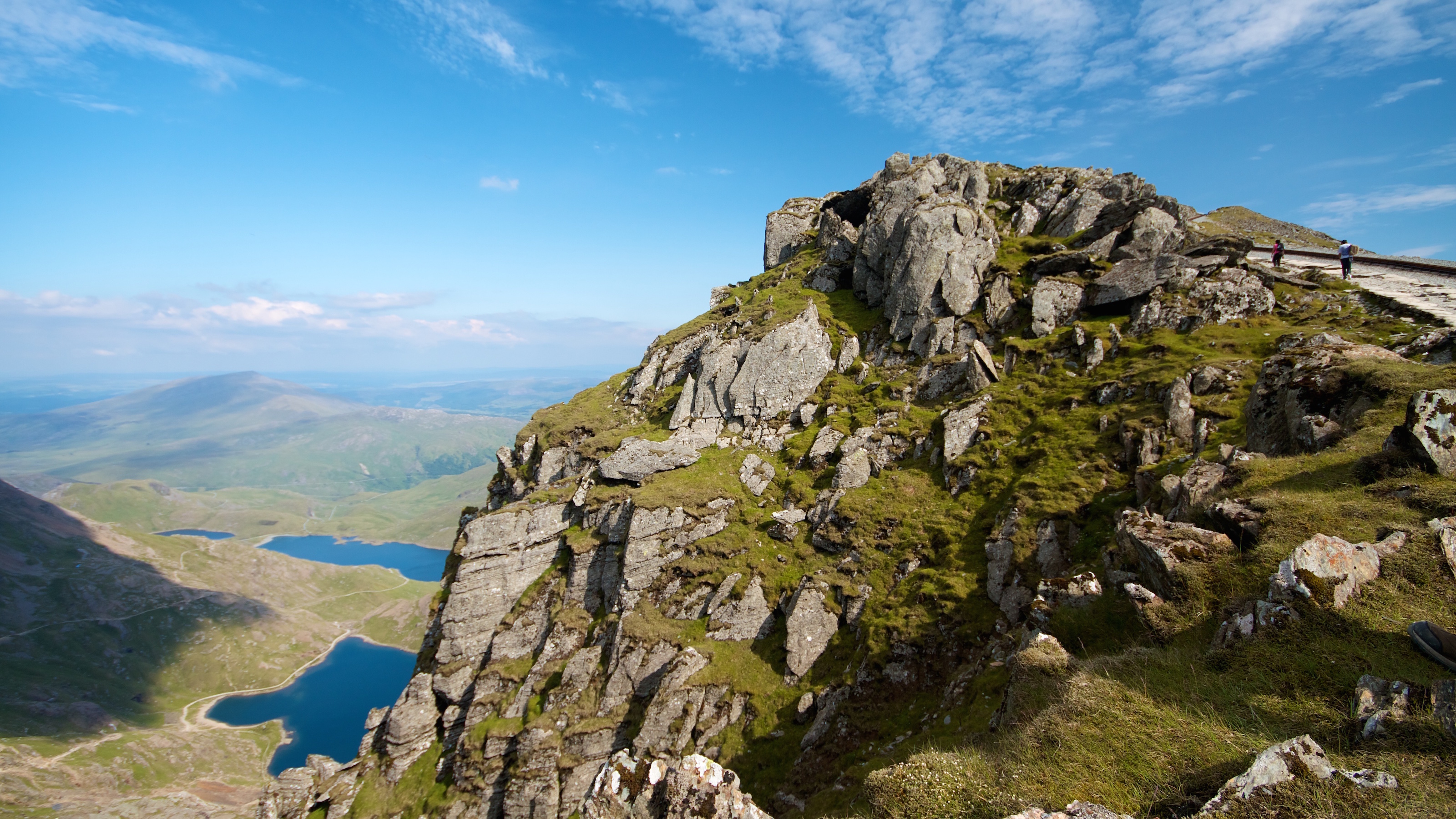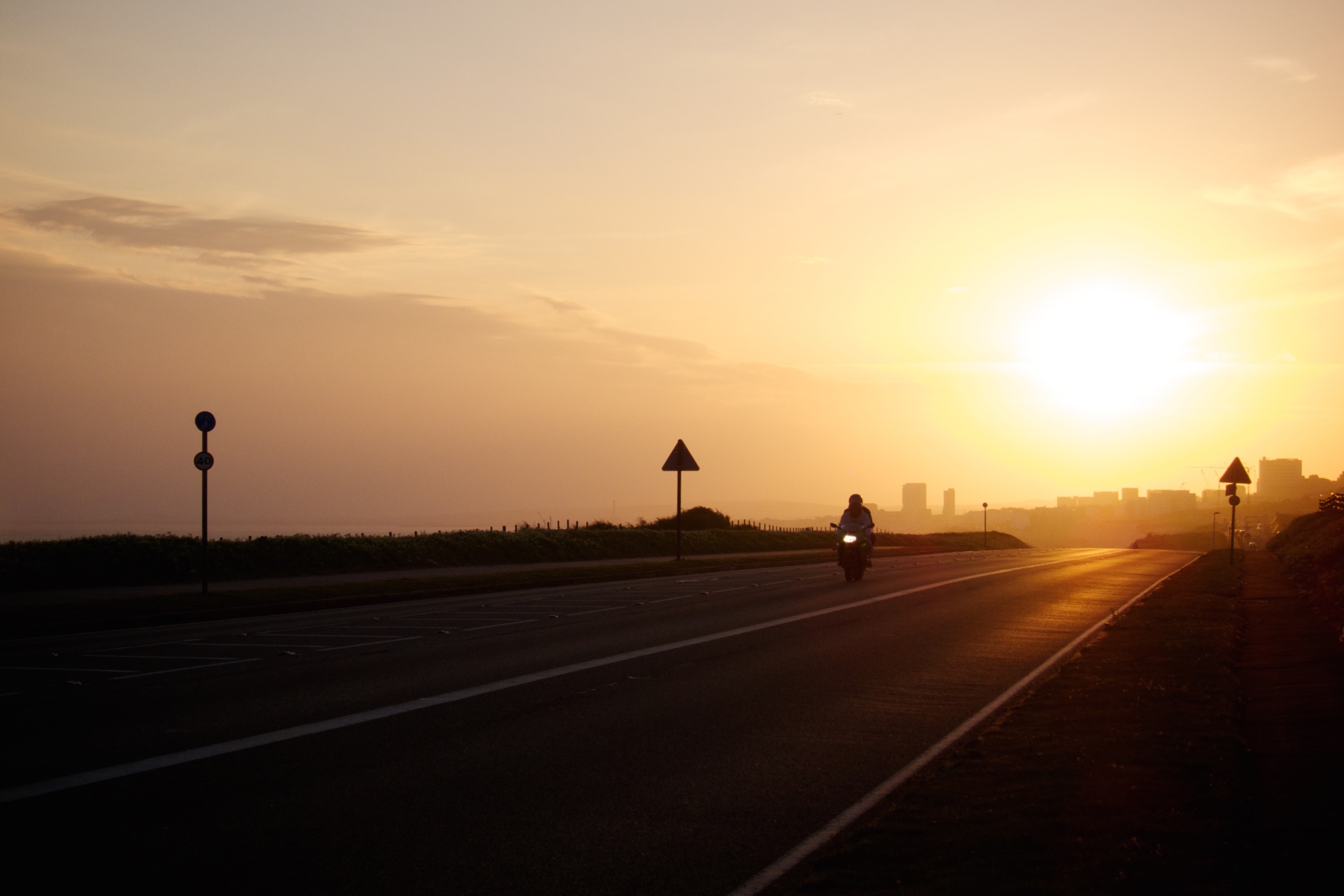Vibrant Vancouver
Sat in the front seat of another float plane, I enjoyed a breathtaking view of Vancouver as I descended into its harbour. For such a densely populated city, I felt I’d arrived somewhere small and friendly.
Sat in the front seat of another float plane, I enjoyed a breathtaking view of Vancouver as I descended into its harbour. For such a densely populated city, I felt I’d arrived somewhere small and friendly.
After eight days exploring North America, it was time to visit some of its more westerly extremities. Flying out from Toronto, my first stop was Saltspring Island, via Vancouver Airport and a float plane.
Some cities are best arrived at by air; only by flying over Sydney, London or New York do you get a sense of their scale and majesty. San Francisco is best approached by car, with some of the best views of that city seen as you cross the Bay Bridge. Others are best suited to arrival by train. Toronto is one such city.
After four days in Washington, it was on to another North American capital, Ottawa. I encountered a city that was cold yet plentiful in ATMs that would refuse to accept my debit card.
Marissa Mayer addressing Google designers, as quoted in In The Plex by Steven Levy:
“It looks like a human was involved in choosing what went where,” Marissa told them. “It looks too editorialized. Google products are machine-driven. They’re created by machines. And that is what makes us powerful. That’s what makes our products great.”
This explains everything.
(via Buzz Andersen)
My North American adventure started in Washington DC; ostensibly so I could attend an edition of this year’s An Event Apart conference. Yet it was also a good excuse to catch up with Shannon, who graciously planned a tour of the city for me and Andy.
Having tried so diligently last year to reduce the amount of flying I do, I hoped to keep this year’s long-haul flights to one. With an important part of my family now settled in São Paulo, and some of my best friends based in San Francisco, maybe such lofty goals are foolhardy. Before I write about my most recent travels, I address the hypocrisy in taking such a trip.
Pinboard’s Maciej Ceglowski:
Social networks exist to sell you crap. The icky feeling you get when your friend starts to talk to you about Amway, or when you spot someone passing out business cards at a birthday party, is the entire driving force behind a site like Facebook.
Because their collection methods are kind of primitive, these sites have to coax you into doing as much of your social interaction as possible while logged in, so they can see it. It’s as if an ad agency built a nationwide chain of pubs and night clubs in the hopes that people would spend all their time there, rigging the place with microphones and cameras to keep abreast of the latest trends.
Required reading.

Possibly my favourite photo of those taken during the Brighton Camera Trail, a short afternoon-long photography course I attended last month. You can see more photos from the trail here.
October has been a crazy month, and I’m not even done with it yet!
With three years of iPhone ownership I’ve become accustomed to the design and behaviour of iOS, yet at the same time ignorant of other smartphone platforms. Thanks to Clearleft’s new mobile testing environment, I can now spend a week or so with different operating systems to get a feel for how they differ. First up; Windows Phone 7.
Steve Jobs’ 2005 Stanford commencement address is a lesson on how to lead a life of fulfilment:
You’ve got to find what you love. And that is as true for your work as it is for your lovers. Your work is going to fill a large part of your life, and the only way to be truly satisfied is to do what you believe is great work. And the only way to do great work is to love what you do. If you haven’t found it yet, keep looking. Don’t settle. As with all matters of the heart, you’ll know when you find it. And, like any great relationship, it just gets better and better as the years roll on. So keep looking until you find it. Don’t settle.
And death allows for no excuses:
Remembering that I’ll be dead soon is the most important tool I’ve ever encountered to help me make the big choices in life. Because almost everything – all external expectations, all pride, all fear of embarrassment or failure – these things just fall away in the face of death, leaving only what is truly important. Remembering that you are going to die is the best way I know to avoid the trap of thinking you have something to lose. You are already naked. There is no reason not to follow your heart.
Stay hungry. Stay foolish.
I aim to do so.
I will never grow tired of this commercial. Even less so this version narrated by Steve Jobs.
Thank you, Steve.

Thanks to London Open House, last month Simon and I visited the Commonwealth Institute, regarded by English Heritage as the second most important modern building in London (after Royal Festival Hall). Neglected for ten years, work will soon begin on preparing the site for the New Design Museum, scheduled to open in 2014.
Having exhibited here in 2002, I look forward to seeing how the building will adapt to meet its new purpose. I’ve posted photos from my visit on Flickr. You can also view Simon’s photos too.
David Sim:
When I fell asleep in front of BBC1, dinosaurs were on. When I awoke, Richard Madeley had traced his ancestors. Seems a waste of evolution.
Today I was told the sudden and unexpected news that one of my family’s pets, Sage, had been put to sleep. Unbeknown to us, his body was being ravaged by a cancerous tumour so aggressive, that it only made itself visible last weekend. He had days to live.
Whatever you may think of British Airways, it’s hard not to be impressed by this latest campaign. Part of a brand repositioning exercise that sees the return of the company’s coat of arms, this advert meticulously recounts the history of BA through its planes, people, ancestor companies and branding. It also features a nostalgic nod to Concorde, which still looks like an aircraft of the future rather than one of the past.
In many ways, I’m reminded of a similarly retro themed advert that BA’s arch rival Virgin Atlantic produced to celebrate their 25th anniversary in 2009.
Garrett Murray perfectly sums up my thoughts on the changes to Gowalla:
This version steps away from the straight-forward check-in functionality and replaces it with a more social version called “stories” The basic idea is that you create a story at a location, tag your friends, upload photos and comment. I think this is a terrific idea, and I think it’s something relatively unique in the check-in app space.
But it’s not what I want.
I’m willing to keep the app on my iPhone for a little while, if only in the hope that the new city guides will prove useful during my forthcoming trip to the US and Canada. Still, it’s hard to see myself using this application much more than I used to, if at all.
I quickly tired of posting my presentations to SlideShare as the service became increasingly laden with features and countless advertising.
Thankfully there’s now an alternative in the form of Speaker Deck, which publicly launched this week. Designed by Ordered List, this new service gives presentations the distraction free environment they deserve, and is an exemplar of detail-driven design. Don’t let the simplicity of the product fool you. Attention has been fostered on even the tiniest details; skim over thumbnail images to see what I mean.
If you have presentations you wish to showcase, I encourage you to try Speaker Deck. You won’t be disappointed.
Adrian Short:
You can turn your back on the social networks that matter in your field and be free and independent running your own site on your own domain. But increasingly that freedom is just the freedom to be ignored, the freedom to starve. We need to use social networks to get heard and this forces us into digital serfdom. We give more power to Big Web companies with every tweet and page we post to their networks while hoping to get a bit of traffic and attention back for ourselves. The open web of free and independent websites has never looked so weak.
A timely post. When read in tandem with Nik Cubrilovic’s post ‘Logging out of Facebook is not enough’, the features announced at Facebook’s most recent f8 event aren’t just creepy, but downright sinister.
Cennydd Bowles:
In essence, editing is critique for the written word: review, question, revise.
Another video showcased by Adam Buxton at last month’s Edinburgh BUG. You can find a complete archive of BUG videos at http://bugvideos.co.uk/.
George Monbiot writes about another boneheaded reform from a Conservative-led government nobody voted for. He concludes:
Plutocracy passes through a perpetual cycle. It lobbies against the restraints that curb its destructive greed. It succeeds. As a result it collapses. It gets rescued, at enormous cost, by the forces it fought: regulators, planners, tax collectors, an interventionist state. It recovers, dusts itself down, then resumes its attack on the people who rescued it. This assault on planning belongs to the cycle. But the damage the plutocrats mean to inflict will not be reversible.
These are the times in which we now live.
Bobbie Johnson at GigaOm:
“What is Google? What do they sell?” asks Don Norman, the author of The Design of Everyday Things and a demigod of the design world.
It’s a question that gets asked a lot, especially as the company’s power and products continue to expand. In a talk on Friday at the dConstruct conference in Brighton, England, he pointed out that – despite the complexity of the organisation – the answer usually looks pretty simple.
“They have lots of people, lots of servers, they have Android, they have Google Docs, they just bought Motorola. Most people would say ‘we’re the users, and the product is advertising’,” he said. “But in fact the advertisers are the users and you are the product.”
Then he went further. “They say their goal is to gather all the knowledge in the world in one place, but really their goal is to gather all of the people in the world and sell them.”
Whilst some bemoaned the fact that his opening keynote shared little new, I think it’s important to be reminded how the industry works, and how it’s changing – sometimes for the worse. The world needs more people like Don Norman.

One of the few impressive photos I took during my weekend in Edinburgh.
Having enjoyed the Edinburgh Fringe when I attended for the first time last August, I was determined to do it all over again. A long bank holiday weekend and a number of shows by comedians I’ve been longing to see, left few excuses not to return. Here are my thoughts on each performance I saw this time round.
This was the final video shown during Adam Buxton’s BUG show in Edinburgh. I’ve been ‘fucking the replay button’ (you had to be there) ever since.
August has been a crazy month in the technology press, but no story has had the same impact than Steve Job’s resignation as CEO of Apple. Whilst I’ve been enjoying commentary and many stories regarding his 14-year tenure, it’s the man’s own words that have been most insightful. From this collection of Steve Job’s quotes, an answer given during an interview with Wired caught my eye:
I’m 40 years old, and this stuff doesn’t change the world. It really doesn’t.
I’m sorry, it’s true. Having children really changes your view on these things. We’re born, we live for a brief instant, and we die. It’s been happening for a long time. Technology is not changing it much – if at all.
These technologies can make life easier, can let us touch people we might not otherwise. You may have a child with a birth defect and be able to get in touch with other parents and support groups, get medical information, the latest experimental drugs. These things can profoundly influence life. I’m not downplaying that.
But it’s a disservice to constantly put things in this radical new light – that it’s going to change everything. Things don’t have to change the world to be important.
Only a few weeks ago I was bemoaning the overuse of the phrase ‘change the world’. I heard this said far too often when I worked in the Valley, so it was heartening to read Jobs’ thoughts on the matter.
I do so hope Steve will have plenty more opportunities to part with such wisdom as he enjoys his retirement.
Zerply is a professional network that helps you find like minded people by tags, skills, location and more. Essentially it’s a simpler, classier replacement for LinkedIn. It gained a degree of traction this week after being featured by Tina Roth Eisenberg, who perfectly summed up my problems with LinkedIn:
I had fallen out of love with LinkedIn a long time ago, but last week’s sneaky move (read about it here) pushed me over the edge. What a lost opportunity. LinkedIn was built on such a fantastic core idea. And then they tried to be twitter-and-facebook-and-everything-else at once. Bummer.
I’ve deleted my LinkedIn account. You can now find my professional profile on Zerply.
This week Adobe revealed Muse, yet another web application but this time aimed at print designers looking to transfer their skills to the web. However this app has created some controversy, not only due the quality of the code it outputs, but also the claims made in the marketing videos.
Facebook’s continuing hoovering up of top design talent has been worrying me for some months. The shopping spree continued earlier this month with the acquisition of Push Pop Press, a promising start-up building an innovative digital publishing platform.
Transcript of my presentation at Geek in the Park

I’ve finally uploaded my photos from this year’s Coed-y-Brenin weekender. Whilst this annual weekend in Wales is still referred to as ‘Coed-y-Brenin’, we stopped biking in that forest many years ago, and now visit other attractions near the campsite in Dolgellau instead.
This year Mark, Dave, Jon and I climbed Snowdon, the highest mountain in England and Wales. It was a gorgeous day and the views weren’t disappointing either.
Sniff Petrol:
Murdoch’s money brings F1 to Sky. “Are Red Bull running team orders? Let’s hack into their radio messages to find out…”
Some disappointing news today for fans of Formula 1. The BBC will only be showing half of next year’s races live, as a new deal means it will be sharing broadcasting rights with BSkyB.
Unless you’re viewing this in your RSS reader, you may have noticed a few changes to the site. It’s been well over two years since the last redesign, but I’ve been working on this update on-and-off for the last 12 months. I could probably continue tweaking and refining, but as a wise man once said, ‘real artists ship’.
Somewhat forgotten in the last few months has been my thoughts on Brasília which I visited all the way back in March. For such an incredibly city it seems remiss not to record my thoughts before they fade into distint memory.
Brasília is remarkable for a number of reasons, not least its aeroplane like street layout planned by Lúcio Costa. However it’s the distinctive architecture that draws most attention, and much of this was designed by Oscar Niemeyer. Few architects are given the opportunity to design on such a scale, so it’s unsurprising that I recognised many familiar patterns and motifs appearing throughout the city’s many different buildings.
Clayton Miller:
Microsoft’s Metro UI owns the square. Apple has a corner on the roundrect, from the Springboard launcher to the iPhone hardware itself. Nokia, despite its late entry with MeeGo’s Harmattan UI, found the squircle unclaimed and ran with it beautifully. Palm has used the circle from the early days of PalmOS, and in WebOS, HP continues the tradition with care (one might even note that both Palm and HP structure their wordmarks around the circle).
I have a nagging feeling this observation will become useful on future projects. (Via John Gruber)
Two years ago I joined Clearleft. Now with the responsive design movement in full swing, I look back over the last two years to see how much my approach to web design has changed.

One of my favourite photos from a recent Saturday spent exploring Brighton with my camera.
Andy Budd:
Humans have the tendency to focus on short term benefits over long term harm. This helps explain Facebook.
Much of the excitement has come in the form of web conferences, and looking back, I find it surprising just how many I’ve attended this year already.
Whilst I no longer want to ‘tactically vote’ or have my MP hold on to a ‘safe seat’, I’d much rather see continued reform towards fairer representation across all parts of government.
Amazing – if slightly spooky – photos taken in London’s abandoned underground ‘Mail Rail’.
Invaluable advise from Twitter’s Mark Otto:
If you’re a graphic designer, work towards bringing whatever print experience you have to a small single page site. If you’re an interaction designer, start checking out HTML and CSS, and then move on to some basic jQuery. By doing so, you become a much more versatile designer and contributor on any project.
Slides from my presentation at Oxford Geek Night
For anyone coming to Brasília for its modernist architecture, no visit would be complete without a stay at this hotel. Designed by Oscar Niemeyer and opened in 1958, it hosted dignitaries such as Queen Elizabeth and Che Guevara before being devastated by fire in 1978. After facing decades of abandonment and neglect, it was modernised and reopened in 2006.
As I walked the streets of San Francisco, buoyed by their comfortable familiarity and unique soundtrack, I knew that this was still a city I could never call home.
Me, after a day spent exploring my former home of San Francisco:
Underground cables rumbling, sirens wailing, horns beeping. Trams ringing and drums thumping. San Francisco has a soundtrack, and I like it.
This years SXSW Interactive saw 1,041 sessions presented by 1,648 speakers, growing to such extent that its size now rivals that of the more popular music festival. Yet bigger doesn’t necessarily mean better.
Slides and referenced transcript from my talk at APA’’s Digital Breakfast
Last weekend I took part in the Brighton Half Marathon. With an official chip time of 2:31:27, had I not stopped twice to relieve myself, I would have completed it in under two and a half hours. That I ran the entire distance is what I’m most proud of however – although the same can’t be said of my non-existant training schedule prior to the event.
The King’s Speech is undoubtedly one of the most successful independent British films ever made, yet some see this popularity as problematic given the artistic licence given to the events it portrays.
Slides from my presentation at Multipack Presents
Volkswagen again giving in a lesson in how advertising is really done.
Joseph Perla explains how Facebook’s business model is built on sand:
Eventually, though, and this might take a long time, but it is finite, everyone will have tried Facebook ads and know that they are useless. Eventually, after 10 million businesses have invested $1000 each, and Facebook has earned $10 billion in revenue in total, then they will have run out of new customers and their revenue will dry up. A useless product is never sustainable.
Last year was notable for a running theme on sustainability; both in the topics I was writing about and my decision not to make any flights as part of a 10:10 pledge to reduce my carbon emissions by 10%. This meant travel was based around the British Isles, and for the first time I visited all four constituent countries of the United Kingdom in one year.
Yves Marchand and Romain Meffre’s extraordinary photographs documenting the dramatic decline of a major American city.